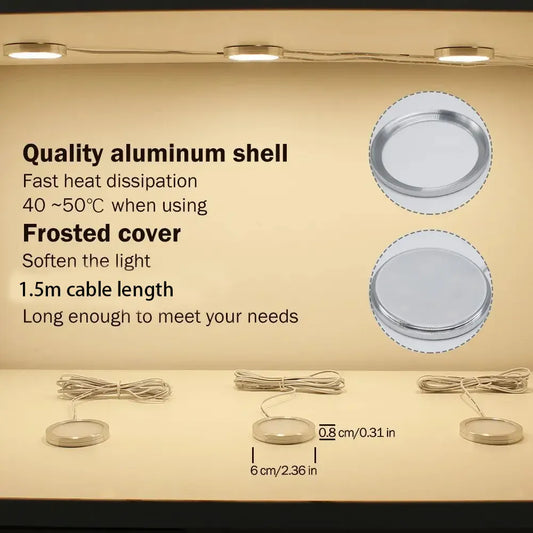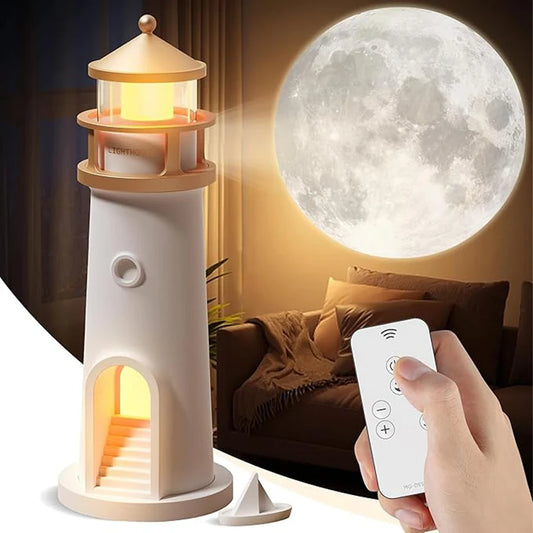
What is the Difference Between Hardwired and Plug-in Under Cabinet Lighting?
Share
Table of Contents
- Introduction
- What is the Difference Between Hardwired and Plug-in Under Cabinet Lighting?
- Overview of Hardwired Under Cabinet Lighting
- Overview of Plug-in Under Cabinet Lighting
- Comparing Hardwired and Plug-in Under Cabinet Lighting
- Practical Examples and Personal Experiences
- Conclusion
- FAQs
Introduction
When choosing under cabinet lighting, one of the primary considerations is whether to go with hardwired or plug-in options. The main difference between hardwired and plug-in under cabinet lighting lies in their installation and power source. Hardwired lights are permanently connected to your home's electrical system, while plug-in lights are connected via a standard electrical outlet. Let's explore these options in more detail.
What is the Difference Between Hardwired and Plug-in Under Cabinet Lighting?
- Hardwired under cabinet lighting is integrated directly into your home's electrical system, providing a seamless and often more aesthetically pleasing solution.
- Plug-in under cabinet lighting, on the other hand, is easier to install and more flexible, as it simply plugs into a standard electrical outlet. Each type has its own set of benefits and considerations.
Overview of Hardwired Under Cabinet Lighting
Benefits of Hardwired Lighting
- Aesthetic Appeal: Hardwired lighting offers a clean, professional look with no visible cords.
- Consistent Power Supply: Being directly connected to the electrical system ensures a reliable and consistent power supply.
- Integrated Control: Hardwired systems can be integrated with wall switches and dimmers, offering more control over your lighting.
Installation Process
- Planning: Determine the layout and placement of the lights.
- Wiring: Run electrical wiring through the walls or cabinets to the light fixtures.
- Connection: Connect the lights to the home's electrical system, typically involving junction boxes and connectors.
- Mounting: Secure the light fixtures under the cabinets.
- Testing: Ensure all connections are secure and test the lights.
Note: Hardwired installation often requires a professional electrician to ensure safety and compliance with electrical codes.
Suitability
Hardwired under cabinet lighting is ideal for homeowners looking for a permanent, seamless lighting solution. It is particularly suitable for new builds or major kitchen renovations where electrical work is already being undertaken.
Overview of Plug-in Under Cabinet Lighting
Benefits of Plug-in Lighting
- Ease of Installation: Plug-in lights can be installed by anyone with minimal tools and no electrical expertise.
- Flexibility: Easy to move and adjust, making them ideal for renters or those who frequently change their kitchen layout.
- Cost-Effective: Generally less expensive upfront and do not require professional installation.
Installation Process
- Planning: Decide on the placement of the lights.
- Mounting: Attach the light fixtures under the cabinets using screws or adhesive.
- Power Connection: Plug the lights into a nearby electrical outlet.
- Securing Cords: Use cord clips or channels to manage and hide the power cords.
Suitability
Plug-in under cabinet lighting is perfect for renters, DIY enthusiasts, or anyone looking for a quick and flexible lighting solution. It’s also a great option for existing kitchens where running new electrical wiring might be challenging or costly.
Comparing Hardwired and Plug-in Under Cabinet Lighting
| Feature | Hardwired Lighting | Plug-in Lighting |
|---|---|---|
| Installation | Requires professional installation | DIY-friendly, easy installation |
| Aesthetics | Clean, no visible cords | Visible cords, but can be managed with cord channels |
| Flexibility | Permanent installation, not easily moved | Easy to move and adjust |
| Control | Can be integrated with wall switches and dimmers | Controlled by built-in switches on the fixtures |
| Cost | Higher upfront cost, potential professional fees | Lower cost, no professional fees |
| Power Supply | Consistent and reliable | Dependent on proximity to outlets |
| Ideal For | Permanent installations, new builds, major renovations | Renters, DIY projects, temporary setups |
Practical Examples and Personal Experiences
Example 1: Home Renovation with Hardwired Lighting
In my recent kitchen renovation, I opted for hardwired LED under cabinet lights. The seamless installation provided a sleek, modern look. The lights are controlled by a dimmer switch, allowing for adjustable brightness levels. The professional installation ensured everything was up to code and functioning perfectly.
Example 2: Rental Apartment with Plug-in Lighting
For my rental apartment, I installed plug-in LED strip lights under the cabinets. The installation was straightforward and didn’t require any electrical work. I used adhesive clips to manage the cords, keeping them tidy and out of sight. The flexibility to move the lights if I rearrange my kitchen is a significant advantage.
Example 3: DIY Kitchen Upgrade
A friend of mine upgraded his kitchen with plug-in puck lights. The installation was quick, and he appreciated not needing an electrician. The puck lights provided focused task lighting, making meal preparation easier. The ability to plug them into existing outlets made the project simple and cost-effective.
Conclusion
In conclusion, the choice between hardwired and plug-in under cabinet lighting depends on your specific needs, budget, and long-term plans for your kitchen. Hardwired lighting offers a permanent, clean, and integrated solution, ideal for homeowners undergoing major renovations or building new kitchens. Plug-in lighting provides flexibility, ease of installation, and cost-effectiveness, making it suitable for renters, DIY enthusiasts, or temporary setups. By understanding the differences and considering expert advice, you can choose the best option for your kitchen lighting needs.
Explore our range of motion sensor under cabinet lighting solutions at Lumaz to find the perfect fit for your kitchen.
FAQs
What are the main differences between hardwired and plug-in under cabinet lighting?
Hardwired lighting is permanently connected to your home's electrical system, offering a clean look and consistent power. Plug-in lighting connects to an electrical outlet, providing flexibility and ease of installation.
Which is more cost-effective: hardwired or plug-in under cabinet lighting?
Plug-in lighting is generally more cost-effective upfront, as it does not require professional installation. Hardwired lighting may have higher initial costs due to the need for an electrician.
Can I install hardwired under cabinet lighting myself?
While it's possible to install hardwired lighting yourself if you have electrical knowledge, it is recommended to hire a professional to ensure safety and compliance with electrical codes.
Is plug-in lighting suitable for permanent installations?
Plug-in lighting can be used for permanent installations, but it is more suited for temporary setups or situations where flexibility is needed, such as in rental properties.
Which type of lighting offers better control options?
Hardwired lighting typically offers better control options, including integration with wall switches and dimmers. Plug-in lighting usually has built-in switches on the fixtures.
Can I switch from plug-in to hardwired lighting in the future?
Yes, it is possible to switch from plug-in to hardwired lighting in the future. This will likely require professional installation and some electrical work to integrate the new fixtures into your home's wiring system.
For More Information




























 />
/>
 />
/>
 />
/>
 />
/>
 />
/>